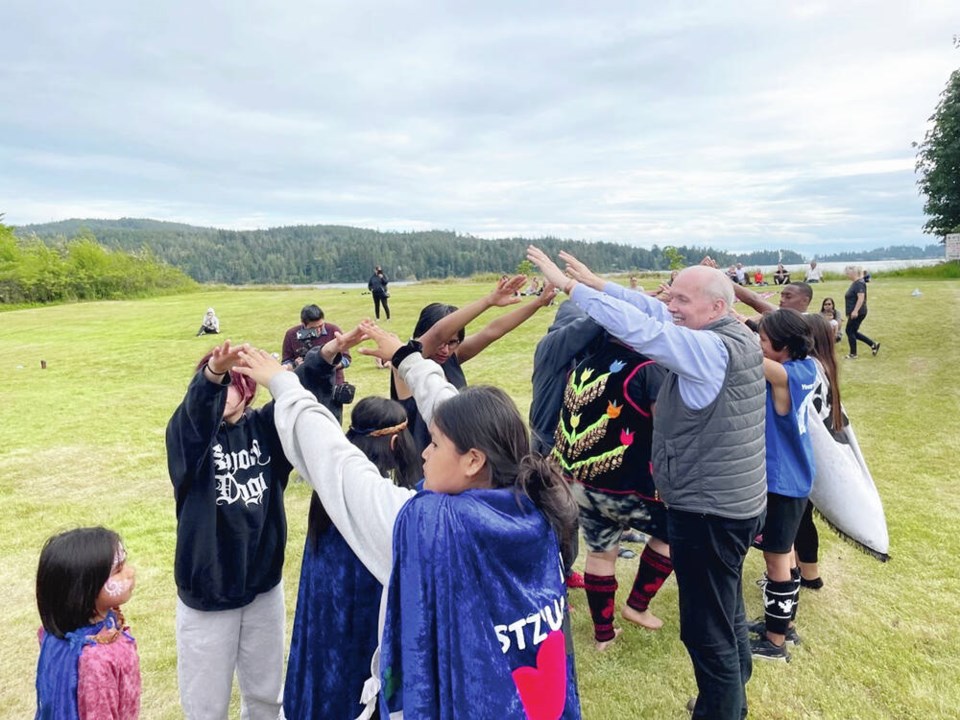This year, I celebrated National Indigenous Peoples Day with T’Sou-ke First Nation in a private event for its members and invited guests. As I arrived, I smelled fresh crabs cooking and watched as the community prepared oysters and clams over a fire.
I saw many people’s faces light up as they mentioned the smell of the seafood cooking, saying: “It’s been so long since I’ve had this.”
There are a lot of things that this pandemic has forced us to find new ways of doing, but there is no virtual comparison to coming together as a community.
This was the first National Indigenous Peoples Day in years that was done in-person, where I could feel the vibrations of drums in my chest, and share a smile and hug that didn’t require a computer.
A group of Sci’anew youth hosted medicine-bag making and drawing workshops, the YMCA came to paint faces and offer crafts, and some members of the Pacific Football Club came to celebrate with the community and kick soccer balls around with the kids.
Many of the youth I spent the afternoon and evening with I’ve known for years, and because of COVID, I didn’t get to see them for years. They are no longer children and growing into young adults, a tangible sign of the time we’ve lost due to the pandemic.
The Young Wolves Dance Group from Stz’uminus First Nation performed on the field overlooking the ocean. Their songs and dances were beautiful. At one point during a song, an eagle flew overhead, circled around and flew over the dancers again. It was so impressive, if you saw it in a movie, you might think that it would never happen in real life.
The Young Wolves called for community participation in many of the songs, and as I watched, I saw the PFC players and their coach dancing with the community with huge smiles on their faces. Even Premier John Horgan danced with the community without skipping a beat — it was obvious it wasn’t his first Friendship Dance.
It’s always a highlight to me when people make the effort to participate in a culture different from their own. I get apprehensive jumping into something unfamiliar, and others do, too. It’s important to try things that are different from our norm, and participating leads to understanding.
Spending time with community is medicine, sharing a meal is medicine and sharing cultural dances, music and art is medicine.
This Indigenous Peoples Day felt like a reconnection for me. It filled my heart and made me so grateful to finally spend time with people that I’ve missed for so long.
I have organized and attended many Indigenous Peoples Day events over the years.
I know how valuable large public events can be to the greater community. So often, people aren’t sure where to start when it comes to building relationships and gaining understanding of Indigenous people and culture, and free public events create that platform.
The event in T’Sou-ke was the first “private” event I’ve attended, and it was different.
I felt honoured to see a community celebrate a special day, honouring their people, culture and history the way they wanted to.
It reminded me that there are times and opportunities to create space for education for everyone, and there are also times when it is OK to do things just for yourself and your community.
In these times when reconciliation is at the forefront of many minds, and many strategic plans have it as one of their overarching goals, we need to remember that it is a gift and honour when Nations offer direction and guidance, and they may not be able to always offer it and that’s OK.
Sometimes they may use that time for themselves and the community, and there is nothing wrong with that.



